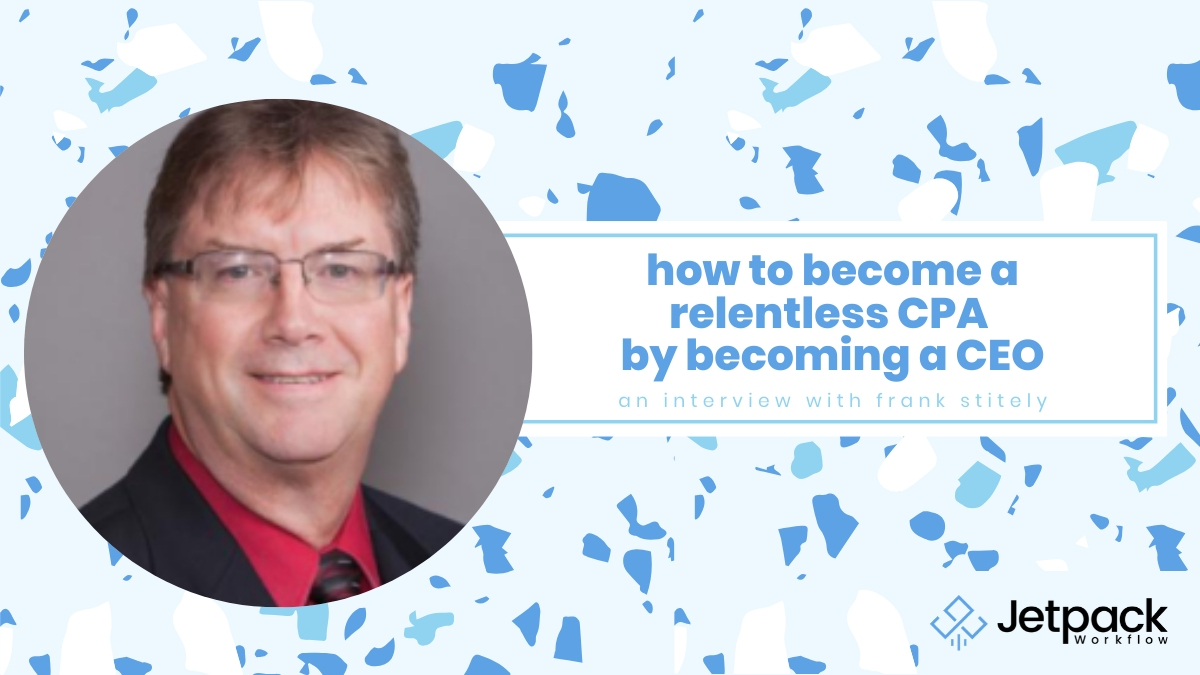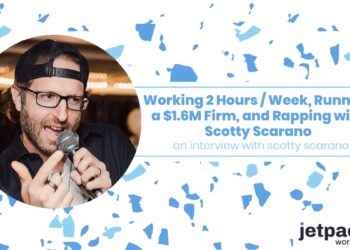How To Become A Relentless CPA By Becoming A CEO

If your goal is to grow your firm, founders have to learn how to transition from being CPAs into CEOs. This can be a rough transition. It requires a different set of skills than accounting and a lot of trust in your hires, workflows, and business structure. The successful firms we’ve interviewed on this program have managed to make the jump, and a new book might just help you take your firm to this next level.
Our guest this week on Grow Your Firm is Frank Stitely of Stitely & Karstetter. He’s written a new book called The Relentless CPA. In the book, he shares his story about how he made the leap from CPA to CEO and the lessons he learned along the way to grow his firm to where it is today. We talked about some of these lessons in our interview.
Summary
- About Stitely & Karstetter, CPAs
- Why he wrote the book
- Leveling up to a CEO mindset and why
- How to properly delegate
- Measuring internal metrics and external satisfaction
- Lifetime Value as a CEO strategy
- Why your Millennial may have the next big idea
- And more
Resources:
- https://www.skcpas.com/
- Purchase Link for The Relentless CPA: https://cpatrendlines.com/shop/fs18rel/
- Frank’s Email: stltely@skcpas.com
When Growth Stops
According to Frank, there is a point that new firms reach when they’ve maxed out their growth potential and need to make a significant change in how they approach business to break beyond it. Most founders start their firms doing the work themselves and hire staff as the amount of work grows. However, they may still be in the thick of the day-to-day work. Eventually, the balancing act between working in the business of accounting and working on growing your firm becomes too much to handle. It creates a painful bottleneck to further growth.
This is the mark where founders need to transition from CPAs to CEOs, but Frank says this bottleneck can be completely avoided if you start thinking about the CEO role as soon as possible. Being a CEO is about putting the right people in the right places, and doing the right things at the right time depending on where your business is.
How To Delegate Effectively
The first part is proper delegation. One mistake in delegation is pushing down only the tasks you think you can delegate. You might hoard more complex tasks to yourself because you feel no one can handle them. This creates bottlenecks and adds more stress to your day.
The better way to delegate is to think about how your staff could handle it and what would need to be done to make it happen. Frank gives an example of business validation work. The data entry for financial statements isn’t very complex. You could assign that to a staff member with good attention to detail to start, then later you can train them on how to review returns.
In the process of doing this, you can document your workflows and developed standardized procedures for tasks. This will make it easier to upskill future staff members if that service gets really popular.
Increasing Lifetime Value
Another thing CEOs have to consider is increasing the lifetime value of clients. When you can estimate this well you can then make decisions on how much you can invest in getting particular kinds of clients without losing money. For instance, if you believe you can make $30,000 in revenue over the life of a client and a third of that is profit then spending a couple thousand to nab that client makes sense.
Frank says that if you’re not keeping clients for 5-7 years then there is something going wrong with the business. Clients come and go, but if you’re doing a good job they should stay around that long. What are some approaches to do this?
Here are some of the strategies we discussed:
Investing in the client relationship – Instead of just offering a raw service, like tax preparation, offer something that can help them improve the health of their business like tax planning. Frank started offering tax planning services after one too many conversations with businesses who didn’t prepare and faced huge tax bills.
Package Deals – Frank offers bundles of services at a variety of price points ($200 and up) and charges a monthly fee. The advantage to the client is that they can ask about services they may not have considered before, like insurance planning and examining investment portfolios. For the firm, they get a clearer view of a client’s financial picture and can offer better advisory services. It also gives them the information they need to know if a client is a good target for further upselling.
Experimentation – He also looks to other industries and to his employees for ways to experiment with growing the business, both in terms of client interactions (e.g. referral programs) to how much to reinvest profit into growing the business.
Learning From Younger Generations
In the same way as the delegation piece, Frank also reaches out to younger Millennial workers for their ideas and thinks about how they could explore them without damaging the firm. As part of this experimentation, he also gives them some level of ownership over the process to help them feel invested in their idea. That’s how Stitely & Karstetter got into investment management for government contractors, and why a person under 30 is running that division.
There is a lot more in the interview, including where to find good Millennial hires, how a recruiting mistake led to one of his best hires, and how he handles weekly meetings from a CEO perspective to keep everyone on task. If you’ve been intrigued by what you’ve read so far, take a listen to the full podcast and let us know what you think!
RELATED LINKS:





